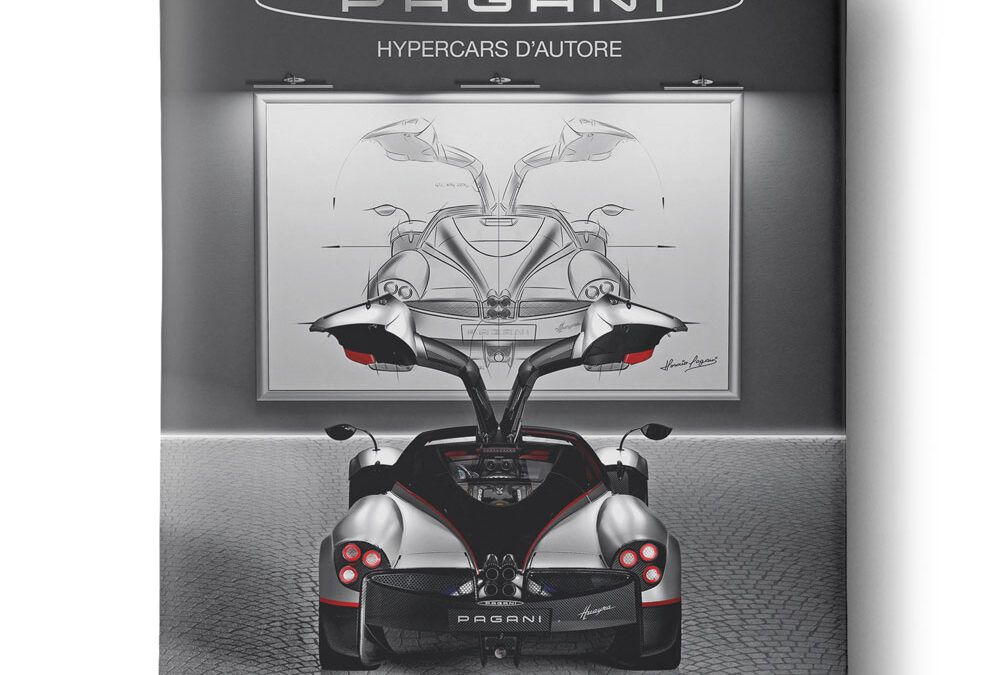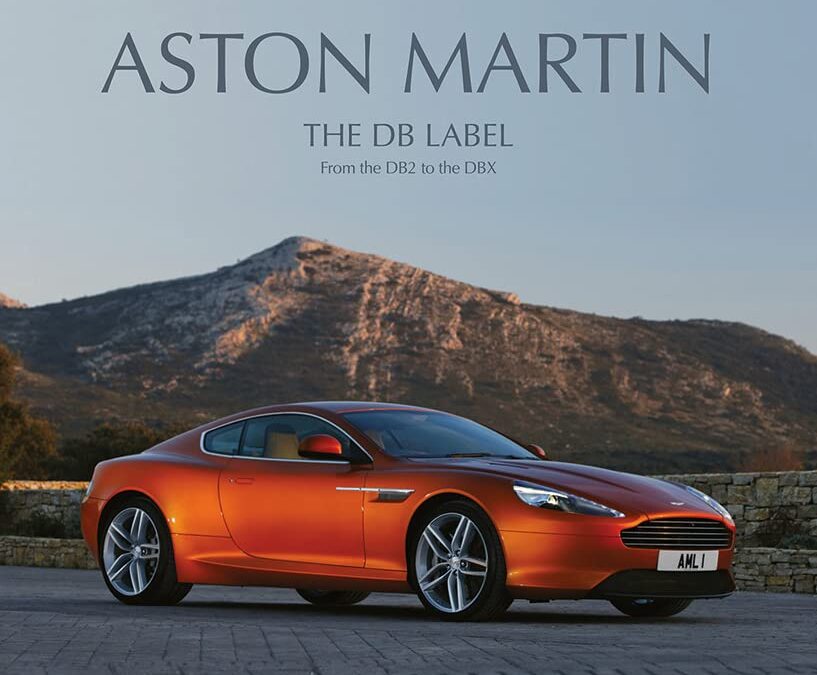
- Comprehensive and informative insight into the DB models produced by Aston Martin
- Richly illustrated with beautiful color photography and detailed illustrations
- An important reference book for all Aston Martin afficionados, translated into English for the first time
In the world of grand touring cars, Aston Martin occupies a special place. The English firm has always distinguished itself by its restraint, by the elegance of its creations, by the discretion of its style, by a reserve rarely observed in a universe that willingly abandons itself to exuberance. This book is devoted to DB models. David Brown relaunched the brand with emblematic cars, including some models that later became legendary, like the famous DB5 of James Bond. The history of Aston Martin over the past 70 years is organized around eight main designs. They are all strongly typed; directly associated with their creators, and with the nature of the successive owners of the company. Serge Bellu, a specialist in the history of the automobile, has produced a superbly illustrated book on the history of this typically British brand.
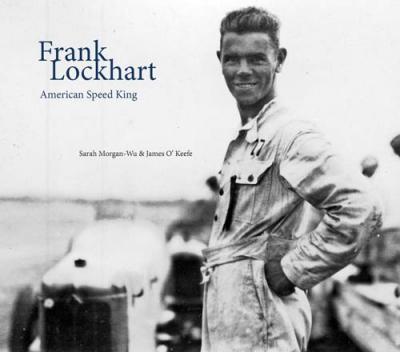
“The compellingly self-confident, handsome, gifted race driver, and mechanical genius named Frank Lockhart has long captured the imagination and curiosity of generations of automobile racing fans as a classic example of the “What if he had lived?” enigma. There remains even today a certain mystery about Frank’s amazing talent and fearless driving ability. There also have been a sizeable number of myths about his life that have grown up over the years and have been repeated so often as to become accepted as the gospel truth.
In a careful historical effort to set the story straight, authors Sarah Morgan-Wu and Jim O’Keefe have combined their efforts to delve into all aspects of Frank’s life and career. They have left no stone unturned in an attempt to verify every bit of information. It is to their credit they have uncovered much long forgotten or hidden information that sheds important light on the true nature of Frank and his remarkable if all too short flash of brilliance on the stage of American automobile racing. Lavishly illustrated, with fully documented charts of Lockhart’s race record, extensively detailed appendices, sourced and fully indexed.
”
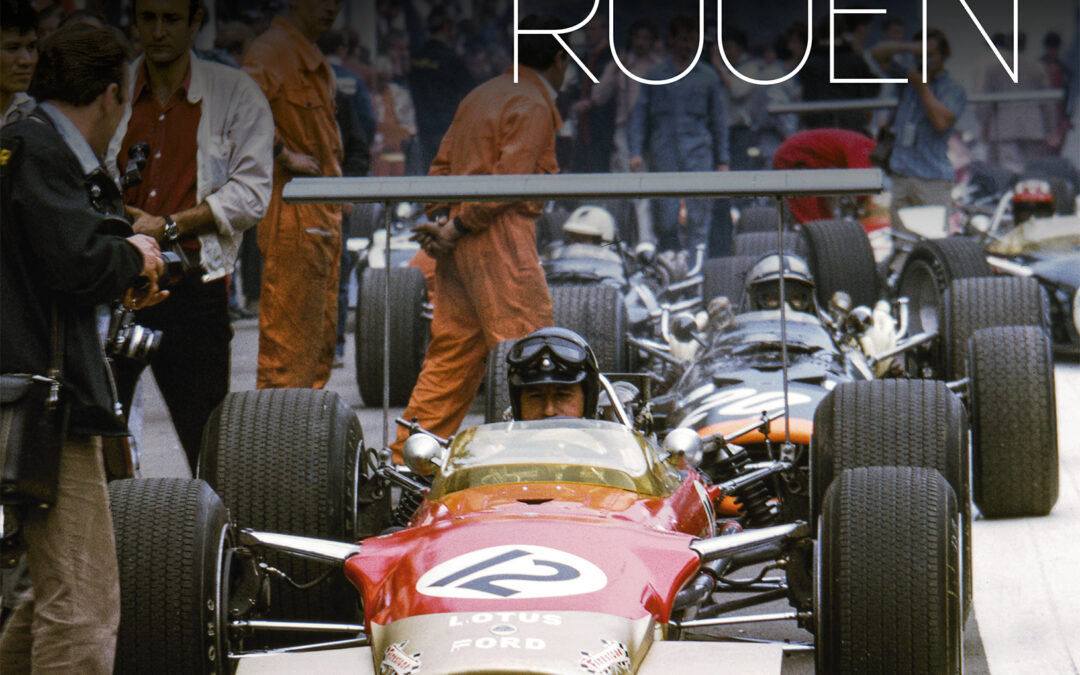
The story of a race – A race in history
This book is part of a new collection of books that unveils « freeze-frames » from the great movie of motor racing history. Its purpose is to explore a particular weekend, the choice of which depends above all on the authors’ ability to gather the most original and complete documentation possible: photos, plans, programs, drawings, period reports and testimonies.
All the historical disciplines are likely to be approached: F1, F2, F3, FJ, FF, sport-prototypes, GT, touring, cups of mark, rally, etc. If the program includes other events of a different nature (motorcycling, cycling…), they are reported with the same concern for precision.
The considerable preparatory work required to produce such works means that each author has had to rely on other contributors to benefit from the pooling of personal networks and rare documentary resources. It is thanks to their remarkable collaborative spirit that this project was possible.
July 1968 – The French Grand Prix succeeds the ACF Grand Prix on the famous circuit of Rouen-Les Essarts. The program is ambitious with the races of R8 Gordini, Formula France, F3 and F1. Unpublished documents, testimonies, never released photos shed a new light on this race weekend mixed with joy and tears. Hear the roar of the V12s and the blaze of the V8s, meet Rindt, Stewart, Hill, Brabham, Ickx, Rodriguez, Beltoise or Schlesser and let yourself be carried away by the story of this Grand Prix.
Text in English and French
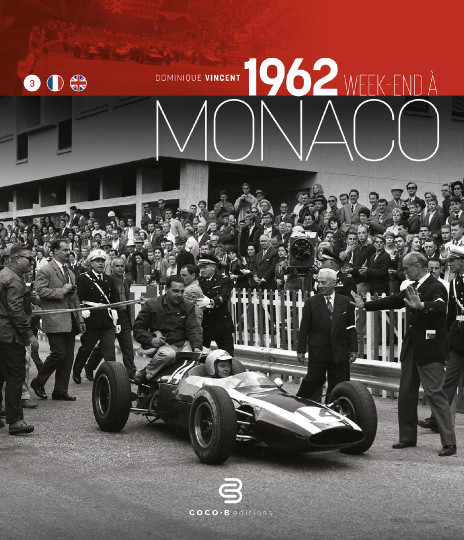
The story of a race – A race in history
This book is part of a new collection of books that unveils « freeze-frames » from the great movie of motor racing history. Its purpose is to explore a particular weekend, the choice of which depends above all on the authors’ ability to gather the most original and complete documentation possible: photos, plans, programs, drawings, period reports and testimonies.
All the historical disciplines are likely to be approached: F1, F2, F3, FJ, FF, sport-prototypes, GT, touring, cups of mark, rally, etc. If the program includes other events of a different nature (motorcycling, cycling…), they are reported with the same concern for precision.
The considerable preparatory work required to produce such works means that each author has had to rely on other contributors to benefit from the pooling of personal networks and rare documentary resources. It is thanks to their remarkable collaborative spirit that this project was possible.
An exceptional iconography at the service of the most prestigious F1 Grand Prix of the season, three Formula Junior races finally revealed thanks to unpublished documents, the presence of Clark, Brabham, Gurney, McLaren, G. Hill, P. Hill, Surtees, Bandini, Siffert and Trintignant at the wheel of the mythical Ferraris, Coopers, Lotuses, Porsches, BRMs and Lolas; the participation of the iconic Lotus 25 with monocoque chassis; these are just some of the ingredients of the spicy menu that we are proposing you to enjoy.
Text in English and French
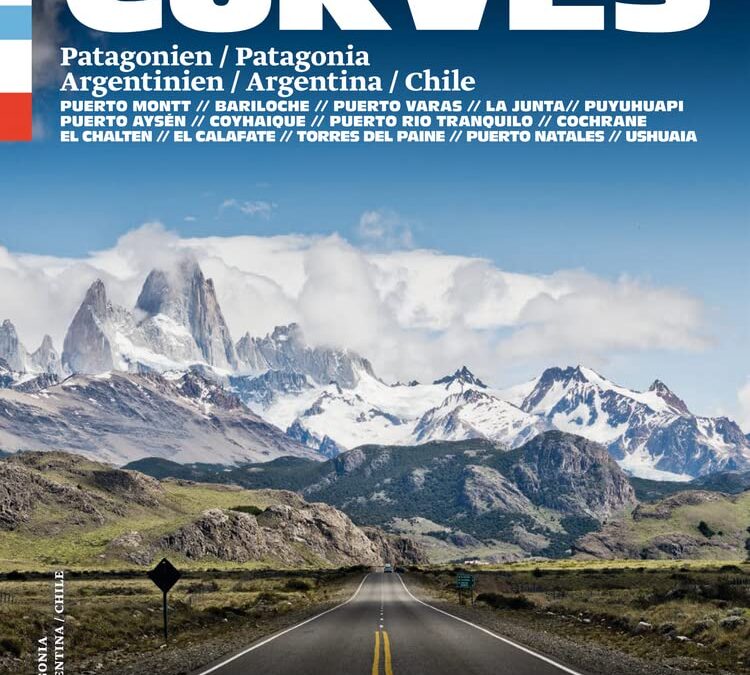
Ready for a trip to the “end of the world”? Patagonia stands for infinite and awe-inspiring landscapes, glistening glaciers and majestic peaks. Exclusively for the CURVES magazine, photographer Stefan Bogner explored the most beautiful scenic roads of this unique area.
Marvellous aerial views show exciting routes right in the middle of nowhere. No matter whether you’re driving casually through the wild steppe in your caravan or prefer the thrills of winding roads with breathtaking views: The extraordinary nature experience makes your trip most certainly an unforgettable journey.
– Patagonia: Pictures of an overwhelming landscape you have never seen like this before
– The loveliest routes and loneliest mountain roads: with maps for route planning
– Unique driving experience on endless roads: for tours by car, motorbike, and caravaning
– Exquisite recommendations: Patagonia‘s best hotels and sights
– CURVES – the passion for lovely curves: an exceptional mix of travelogue and illustrated book
Delightful driving on the world’s most beautiful roads: Patagonia for individualists. Mountain passes with a view, matchless mountain panoramas and vast untouched plateaus: the characteristic landscape at the south end of Chile and Argentina is full of highlights. “Soulful Driving” is Stefan Bogners‘ motto for leisurely road trips, where you set the pace. To top this off, he recommends comfortable accommodation, fine restaurants and sights worth seeing.
Enjoy the airflow and find out where armadillos and guanacos bid good night: With CURVES Patagonia you will explore and fall in love with scenic roads and find the best tips for tours on two or four wheels.

The Places They Raced: Circuits of the Golden Age
WE’RE big fans of the style of this book, which simply has great pictures of pre-1918 circuit racing – be they photographs, slides or postcards – as well as brief captions. It’s an interesting look into the ‘golden age’ of racing.
European city to city races, Gordon Bennett Trophy
Consisting only of pre-WWI postcards of Renaults, Brasiers, Napiers and the like slithering over rutted muddy road circuits, this little hardback conveys the raw nature of early racing in spades. Many shots show the roads on non-race days, cluttered with chickens, bicycles and dog-carts, making it tempting for cartophiles to do some Google Earthing.
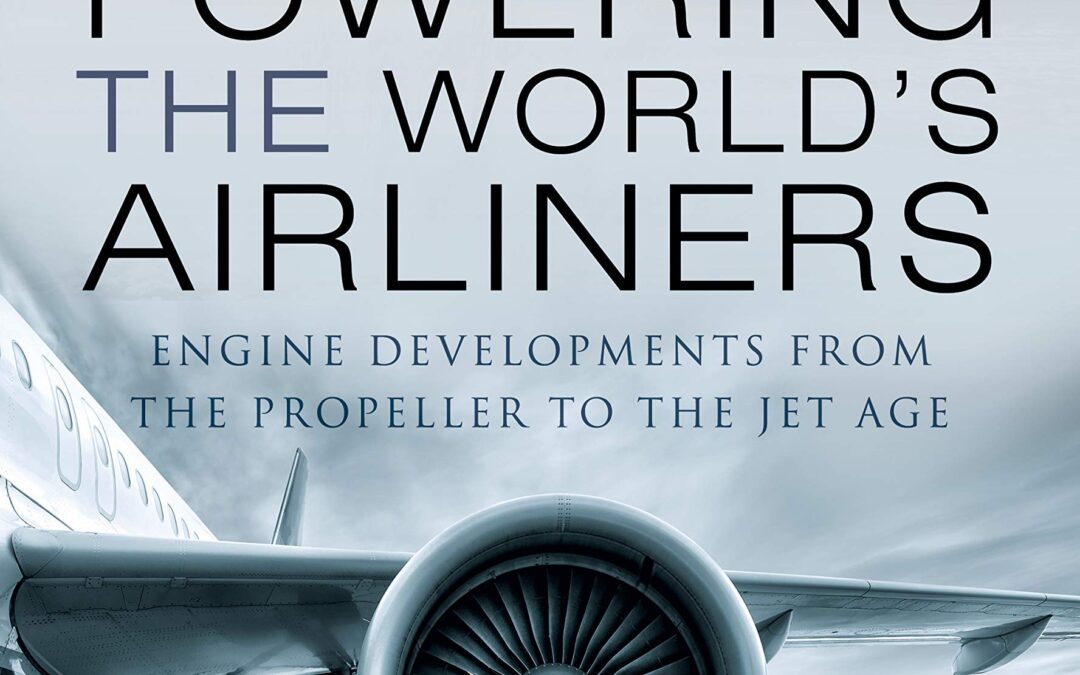
The first efforts of man to fly were limited by his ability to generate sufficient power to lift a heavier-than-air machine off the ground. Propulsion and thrust have therefore been the most fundamental elements in the development of aircraft engines.
From the simple propellers of the first airliners of the 1920s and 1930s, to the turboprops and turbojets of the modern era, the engines used in airliners have undergone dramatic development over a century of remarkable change. These advances are examined in detail by aeronautical engineer and author Reiner Decher, who provides a layman’s guide to the engines that have, and continue to, power the aircraft which carry millions of travelers across millions of miles each year.
Reiner Decher also looks at the development of aero engines during the Second World War and how that conflict drove innovation. He also explains the nature of wing design and how they provide lift and of the considerations of airflow over their surfaces, from the early days of the twentieth century to the present.
To enable an easy understanding of this intriguing subject, Powering the World’s Airliners is profusely illustrated, transporting readers back to the time of each major development and introducing them to the key individuals of the aero industry in each era.
After reading this comprehensive yet engaging story of the machines that power the aircraft in which we fly, no journey will ever seem quite the same again.
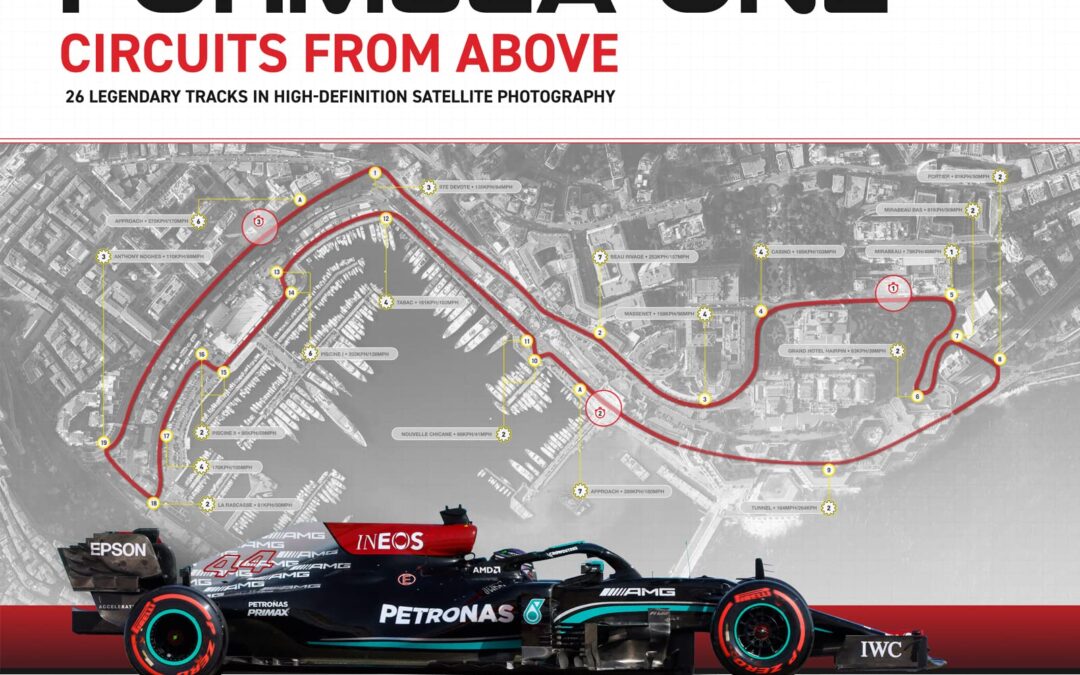
Explore more than 25 legendary F1 race tracks in high-definition satellite photography.
From the glamor of Monaco and Yas Marina, to the heritage of Silverstone, Monza and Spa-Francorchamps, Formula One Circuits from Above showcases more than 25 legendary F1 race tracks as you’ve never seen them before. Powered by unique Google™ Earth photography, this stunning illustrated book highlights the signature properties of iconic circuits including Monza, Interlagos and the Nurburgring in incredible detail, providing an unparalleled insight into the unique strengths and challenges of each.
This insightful commentary is accompanied by fascinating details on the history of each circuit, as well as the outstanding drivers and unforgettable moments that have defined them: the rivalries, the controversies and the spectacular feats of driving skill. Whether you’re a seasoned F1 fan or a newcomer to the sport, Formula One Circuits from Above captures the color, drama, history and excitement of Formula One.

More and more people are hitting the road to the middle of nowhere. Along less-traveled paths they are heading up mountains and down dunes in converted mobile homes, campers, trucks, or vans. They are enjoying the drive and the view through mud-splattered windshields as much as the stops and evening campfires amid stunning terrain. Although many of us love living in cities, we have a growing longing to escape into nature. The outdoor scene is booming and many people are heading off to discover it with their own converted vehicles. This way, they can determine their own routes, itineraries, and pace, as well as how many challenges they’d like to meet along the way. After a day on the go, these multifunctional vehicles also serve as kitchens, campgrounds, and sleeping quarters that offer a great deal more improvised fun than a standard, perfectly equipped RV. Conventional luxuries are eschewed for the sake of greater freedom, tranquility, and adventure. Off the Road captures the special mood of such trips by solo travelers, couples, or families who are seeking an alternative to a more standard vacation or want to live their lives differently ―at least for a while. On the one hand, the book shows how familiar models, such as VW buses, Land Rovers, jeeps, and Toyotas are being rediscovered and repurposed for these exploits. On the other, it presents automotive dreams turned into customized, homey vehicles that offer tailgate breakfasts or roof beds to better admire the stars and that can, in an emergency, cross a river or drag a fallen tree from the road. Whether exploring the desert, showing children the world, or navigating polar landscapes, the journeys collected in Off the Road are as unique as the people who take them. From radical escapists to fans of nature looking for their next trip, the book celebrates the joy of being on the go on four wheels.

Celebrating fifty seasons of the most spectacular motorsport, the World Rally Championship marries state-of-the-art technology with endurance and speed in a battle against both the clock and the elements of nature. Rallying is the mother of all motorsport. Mastering a car on gravel, snow and asphalt, in extreme heat, ice, rain, fog and darkness is the supreme discipline on four wheels. The World Rally Championship, which has been held since 1973, has entered its 50th season. Time to look back at these automotive and human legends from Alpine to Integrale, from Colin McRae to Sébastien Loeb, from the wild Group B cars to the technically fascinating Rally1 racers with hybrid drive. It’s all here in this book.
With hundreds of photos from the McKlein archive, of which many are unique to this book, it encapsulates the highs and lows of a half a century’s fight for the WRC crown: the technical development, the dramas, the heroic sagas and the curiosities. It’s an encyclopaedia of an era of enthusiastic drifting, through to the battle for tenths of a second with the fastest cars of all time travelling on a mixture of gravel roads. A book of stories and pictures about the most spectacular motorsport in the world.
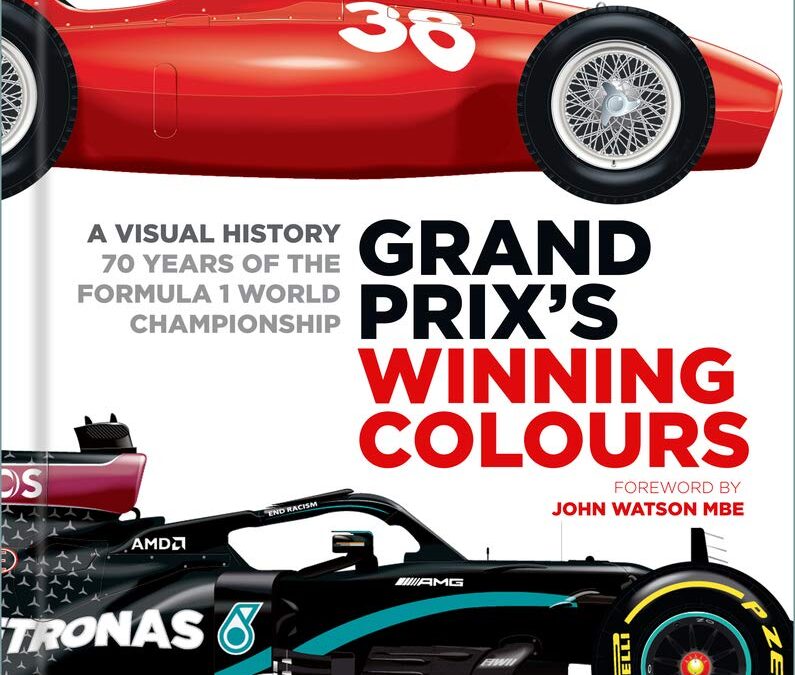
Mick Hill’s colorful book is packed with his signature artwork, and skillfully showcases the cars, drivers, and designers that contributed to the history of Formula 1. Beginning with the flags for hosting countries, it goes on to show every winning car, with details of its designers, drivers, and races won. The book also considers drivers’ helmets, from historic leather caps to modern carbon fiber, as well as the world championship stickers from teams and sponsors, a memento for fans to the race meetings they attended. A complete reference of the first 70 years of the F1 championship, this book will appeal to motor racing fans young and old.
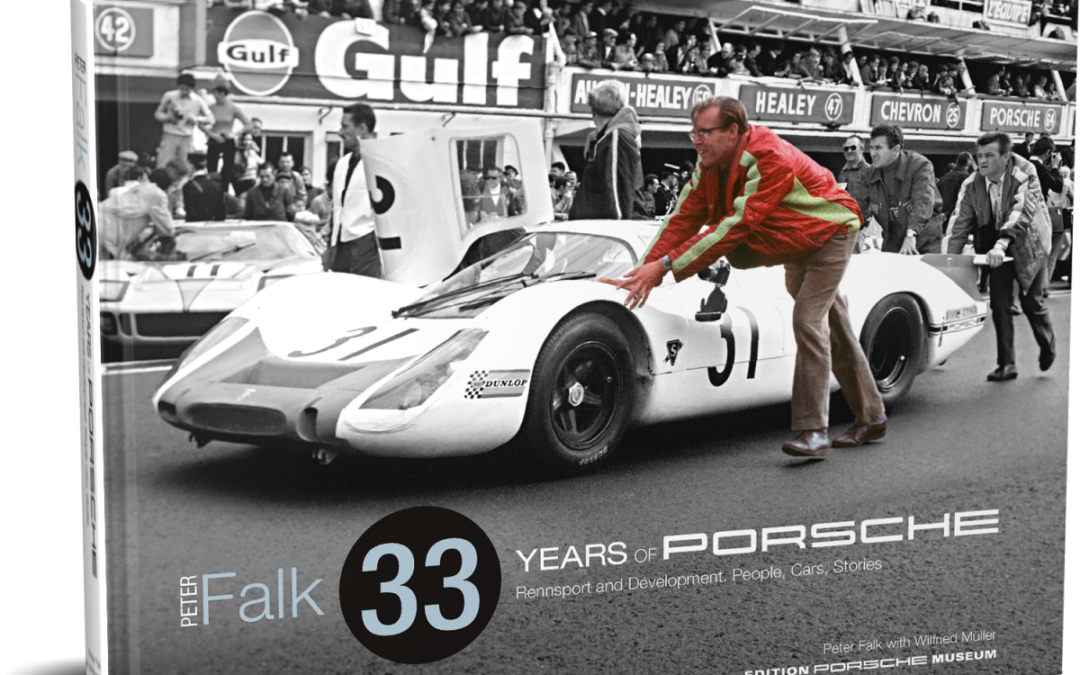
This edition of the book is limited to only 150 numbered copies, contains a hand signature of Peter Falk and comes in a luxury linen slip case.
Peter Falk and Porsche, 33 years of passion and devotion: As their race director and one of the leading figures in their experimental department, Peter Falk contributed significantly to the character of the sports cars from Stuttgart-Zuffenhausen – both on the race track and on the road.
From the first 901 right through to the very last air-cooled Type 993, every Porsche 911 bears the signature of Peter Falk. He joined the company in 1959 and quickly rose through the ranks to head various testing departments. In the mid-sixties, Falk also took over the tactical and technical leadership of the factory’s “Rennsport” team. In 1981, he was appointed as race director and led Porsche throughout its most successful era of competition. “His” team won at Le Mans, became World Sports Car Champions, conquered the Paris-Dakar Rally, and was victorious in Formula 1 with the TAG Turbo engine.
In this book, Peter Falk tells of his years with Porsche. A highly respected person in the world of engineering, he relates how it all began at Porsche – when race drivers and engineers huddled together in a shepherd’s hut at Weissach to discuss suspensions, what the Porsche crew experienced during endless testing adventures in both the Arctic Circle and the Sahara, how the race cars at Le Mans roared to the start over country roads, and how a test drive with a Porsche 908 almost cost him his life. He shares his views on every Porsche race car, from the 904 Carrera GTS to the 962C, and describes the race drivers who competed during his reign: Hans Herrmann, Jacky Ickx, Vic Elford, Derek Bell, Hans-Joachim Stuck and Jochen Mass to name just a few. Falk provides a good, long look into the inner workings of Porsche.
Peter Falk shared his personal Porsche stories and fascinating insights with the author Wilfried Müller. The images in this book come from Peter Falk’s private collection, from the Porsche Historical Archive in Stuttgart-Zuffenhausen, and from the vast cache at McKlein Photography. Along with the contributions from former colleagues and race drivers, these images and stories give an in-depth portrayal of Peter Falk’s 33 years with Porsche.

This book is a reprint of an important publication that was first published by the Society of Automotive Engineers in 1989. It is an authoritative and entertaining account of the evolution of the very early internal combustion engine. We at Octane Press believe it to be a critical piece of automotive history and are happy to have a revised edition to offer to our readers. If you want to understand how the engine in your favorite machine came to exist, this book and Diesel’s Engine, the companion book by the same author, are critical additions to your library!
Internal Fire is the captivating history of the internal combustion engine and the creative individuals who brought it to life. From gunpowder to diesel, the development of these early powerhouses has been recorded from all sides. The influences of new technologies, patents, and obtainable fuels, as well as a growing understanding of the very nature of heat itself are all explored.
Internal Fire is not intended as a textbook, but as the well-researched and readable chronicle of a mechanical servant that has greatly influenced life in the 20th century and beyond.
You will find in this comprehensive book:
■ Gunpowder and Steam
■ Air Engines
■ Thermodynamics: Carnot Charts a Course
■ Patents: Origin and Influence
■ Internal-Combustion Engines: 1791-1813
■ Searching and Perfecting: 1820-1860
■ The Genesis of an Industry
■ Otto and Langen
■ Otto’s Four-Stroke Cycle
■ Brayton and His “Ready Motor”
■ The Two-Stroke Cycle
■ Gas and Gasoline Engines to 1900
■ Oil Engines: An Interim Solution
■ Rudolf Diesel: The End of the Beginning
“This new and well-researched work by Lyle Cummins has at last provided a readable account of the work and people concerned in the search for a more efficient heat engine cycle.”
– The Newcomen Society Bulletin
“Thoroughly researched and eminently readable.”
– The Institute of Mechanical Engineers
“Fascinating tour through the early efforts to design a practical internal-combustion engine.”
– Road & Track

The Riders explores and celebrates the differences and common bonds among motorcyclists around the world via Henry von Wartenberg’s engaging and inviting documentary photography.
Motorcyclists feel a kinship with fellow riders that is not easily explained but runs deeper than choices like bike brand or riding focus. You see it sometimes with a wave of the hand from one lane to the next, with an appreciative nod at a stoplight, or in a U-turn to check on a rider stranded on the roadside.
Motorcyclists make a conscious decision to ride an inherently dangerous device, a machine open to the elements and vagaries of nature. A motorcycle demands a level of attention far greater than a car and consequences for inattention are much graver. On the flip side, riding a motorcycle offers an unmatched sense of freedom, adventure, and involvement.
Von Wartenberg, a long-time rider himself, has traveled the world on a variety of assignments, some motorcycle related and others not. But wherever he was on the planet, he always found a way to connect with fellow riders and document their culture and machines. Over the course of his travels he has photographed riders in more than 30 countries including Bolivia, Austria, Canada, Chile, China, Costa Rica, France, Mongolia, Mexico, Italy, Germany, Iceland, Peru, Spain, the United States, England, and Thailand to name a few.
What emerges on the pages of The Riders is the amazing breadth of the motorcycling world, from outlaw clubs to adventurers to racers to boulevard cruisers to those for whom a motorcycle is the only form of transportation as well a means to make a living.
The Riders is a book sure to be enjoyed by anyone who embraces the two-wheeled world.

In 1986 Paul Crickmore’s first groundbreaking book about the Lockheed SR-71 Blackbird was published. At that time, the Cold War was at its height and the SR-71 was an integral element in securing crucial intelligence from all parts of the globe. The highly sensitive nature of its missions couldn’t be compromised, and it wasn’t until the end of the Cold War that the operational exploits of this incredible aeronautical masterpiece could be openly written about.
As time has passed, more and more information has come to light, with a vast number of official documents declassified and key military figures able to talk openly about the Blackbird program. Paul Crickmore has used these updated facts to revise his previous history of one of the world’s most iconic aircraft of all time, creating what will surely be considered the definitive, timeless volume about the SR-71 Blackbird.

This illustrated book shows an adventurous photo journey across Europe to the remotest regions of the USA, because no way is too far or too daring to reach the �lost cars� in forgotten places.
The nostalgic subjects of the photo artist Dieter Klein are legends and outsiders: Porsche and Cadillac, VW Beetle and Citroen DS. On inconspicuous backyards, in old barns and dense forests, they beautifully show the charm of decay as well as the power of nature and inspire us to think up fantastic stories about the history of objects.
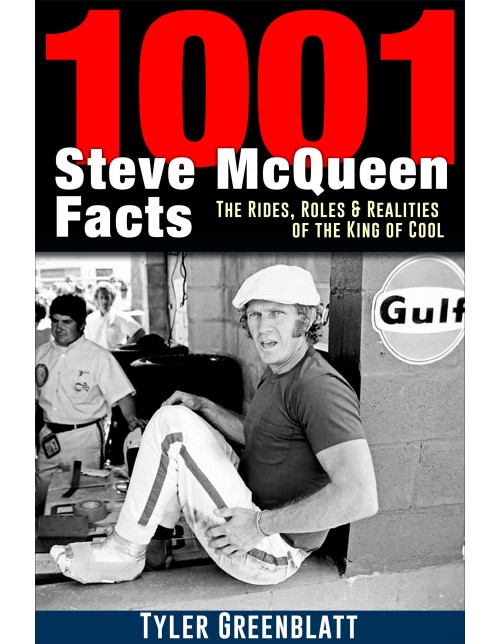
Discover new and unheard-of facts about Hollywood’s coolest car guy: Steve McQueen!
Steve McQueen touched the world through his larger-than-life onscreen persona portraying characters that were flawed and realistic. He played his roles to perfection due to his own imperfections and the bitter realism of his early life. As he once said, he had seemingly lived an entire lifetime before his 18th birthday, all of which shines through in his signature blue-eyed icy stares.
His legacy on film was cemented with Bullitt and Le Mans–the first made him an international superstar, while the latter nearly bankrupted and killed him. Today, they’re among his most popular films. He held nothing back on screen or in life, and today he is remembered and revered not only for his acting but for his racing prowess and the world-class automobile and motorcycle collection he amassed in a relatively short amount of time.
Vehicles once owned, driven, or raced by “The King of Cool” habitually sell for double or triple what their provenance-lacking counterparts do. Ask any 25-year-old car or motorcycle nut born more than a decade after his death who Steve McQueen is, and they’ll immediately recognize the collector and racer but make no mention of the actor. Author Tyler Greenblatt has waded through the plethora of information available to compile 1,001 of the most interesting Steve McQueen facts in this cumulative volume that is sure to keep fans of the actor, racer, and collector enthralled for hours.

Become an encyclopedia of the iconic Tri-Five Chevy and use the facts, charts, part numbers, and codes compiled in this book to bring your 1955, 1956, or 1957 Chevrolet back to its former glory.
What interior color combos could be had in a Two-Ten Delray Club Coupe? Was fuel injection offered on a ’57 Nomad? How do I decipher my cowl tag? Author Patrick Hill addresses these questions and more fully to assist you in returning your Tri-Five back to its factory stock appearance. This extensive assortment of offerings make a book of this nature a must-have item for hobbyists.
The Tri-Five Chevy is an American classic, just like baseball and apple pie. The three-year run of arguably the most recognizable body style of all time continues to resonate with enthusiasts more than 60 years after these cars were first created. What stands out to most fans besides the styling is the vast number of configurations these cars were offered in. Stripped down (One-Fifty) or dolled up (Bel Air convertible), a Tri-Five could be ordered in as many as 21 different models in 1956.
With the Tri-Five Chevrolet Data and ID Guide: 1955, 1956, 1957, you will have a book capable of fitting in your back pocket that has so much information you will feel as though you were a salesperson at a Chevy dealership in the mid 1950s.















